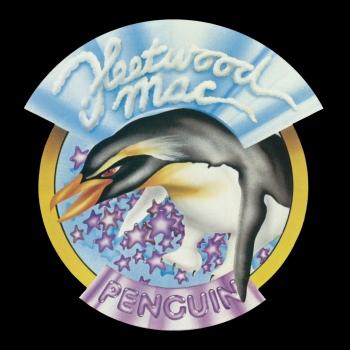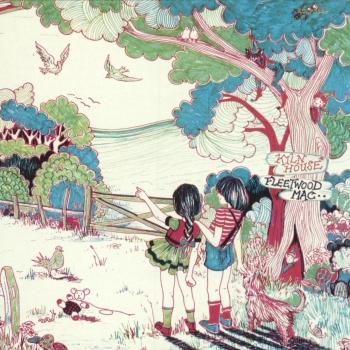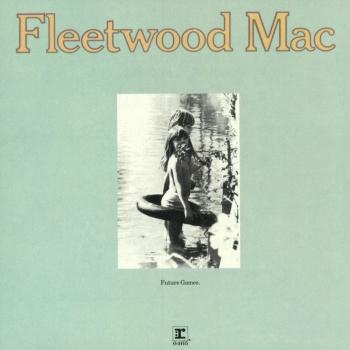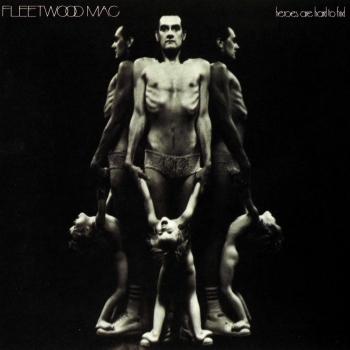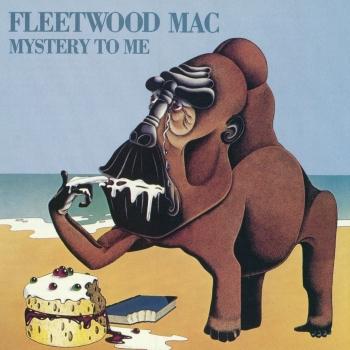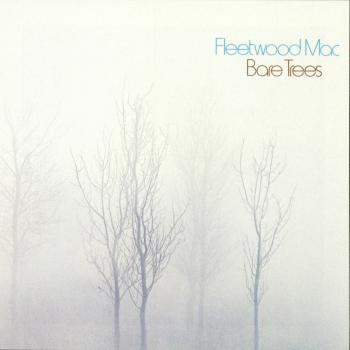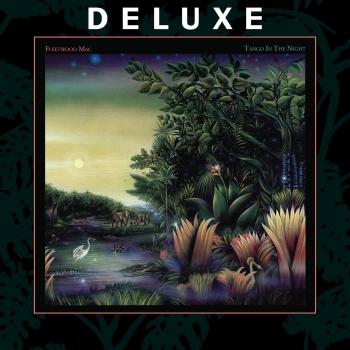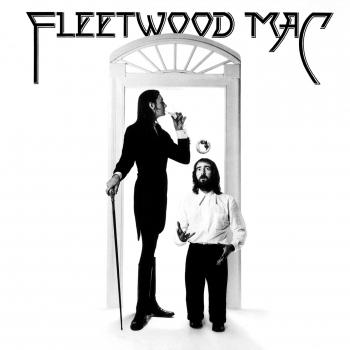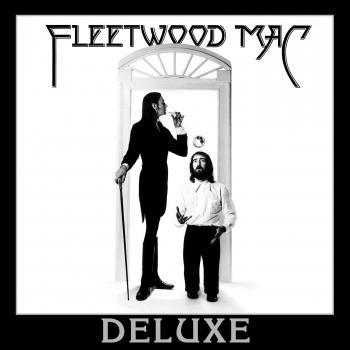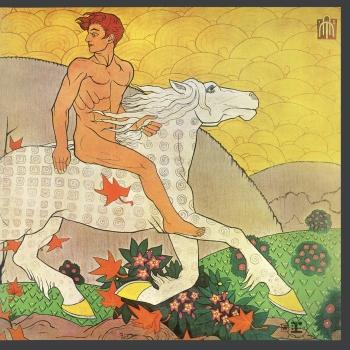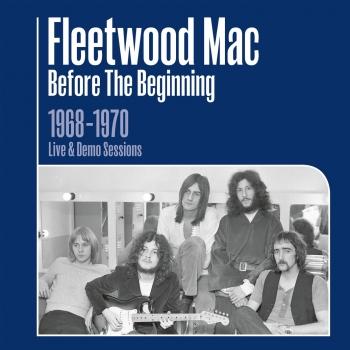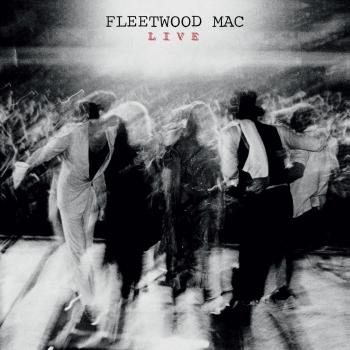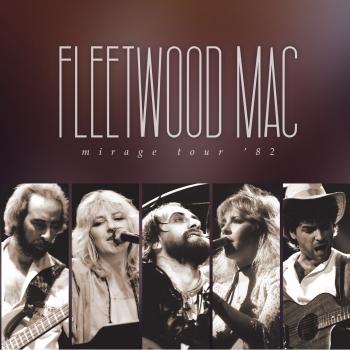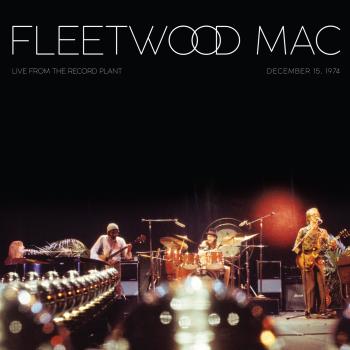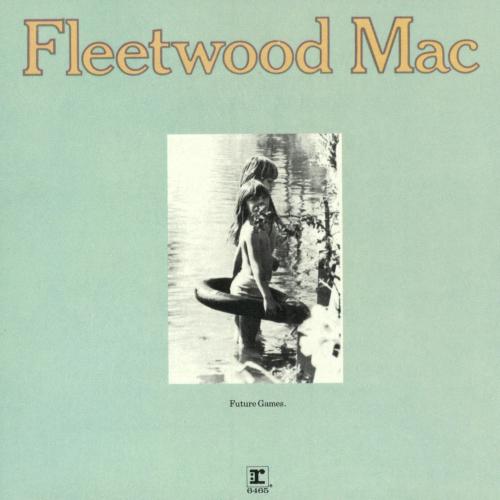
Future Games (Remastered) Fleetwood Mac
Album Info
Album Veröffentlichung:
1971
HRA-Veröffentlichung:
31.03.2017
Das Album enthält Albumcover
Entschuldigen Sie bitte!
Sehr geehrter HIGHRESAUDIO Besucher,
leider kann das Album zurzeit aufgrund von Länder- und Lizenzbeschränkungen nicht gekauft werden oder uns liegt der offizielle Veröffentlichungstermin für Ihr Land noch nicht vor. Wir aktualisieren unsere Veröffentlichungstermine ein- bis zweimal die Woche. Bitte schauen Sie ab und zu mal wieder rein.
Wir empfehlen Ihnen das Album auf Ihre Merkliste zu setzen.
Wir bedanken uns für Ihr Verständnis und Ihre Geduld.
Ihr, HIGHRESAUDIO
- 1 Woman Of 1000 Years 05:24
- 2 Morning Rain 05:36
- 3 What A Shame 02:15
- 4 Future Games 08:19
- 5 Sands Of Time 07:20
- 6 Sometimes 05:24
- 7 Lay It All Down 04:29
- 8 Show Me A Smile 03:20
Info zu Future Games (Remastered)
By this album, Fleetwood Mac had only 2 members from the original line-up of 1967: Mick Fleetwood and John McVie. Danny Kirwan joined in 1968, in time for the group's second album. Christine McVie (nee Perfect) joined in 1970, and Bob Welch joined in Spring 1971 to replace departed guitarist Jeremy Spencer.
Not a Mac album that springs readily to mind, when you consider the multi-billion sellers in the catalogue. This was during their "lost period," when they were neither a boy or a girl. Greeny had long departed and Stevie Nicks was not even a twinkle in Mick Fleetwood's eye. Bob Welch was the frontman, and shared the songs with Christine Mcvie and Danny Kirwan. McVie's "Morning Rain" is a strong song, spoilt by messy production. The album's jewel is Welch's title track. Had he not been discredited for a marital indescretion within the band, this is a song the latest Fleetwood Mac could easily justify doing today.
„By the time of this album's release, Jeremy Spencer had been replaced by Bob Welch and Christine McVie had begun to assert herself more as a singer and songwriter. The result is a distinct move toward folk-rock and pop; Future Games sounds almost nothing like Peter Green's Fleetwood Mac. Bob Welch's eight-minute title track, featuring lead guitar from Danny Kirwan, has one of Welch's characteristic haunting melodies, and with pruning and better editing, it could have been a hit. Christine McVie's "Show Me a Smile" is one of her loveliest ballads. Initial popular reaction was mixed: the album didn't sell as well as Kiln House, but it sold better than any of the band's first three albums in the U.S. In the U.K., where the original lineup had been more successful, Future Games didn't chart at all; the same fate that would befall the rest of its albums until the Lindsey Buckingham-Stevie Nicks era.“ (William Ruhlmann, AMG)
Danny Kirwan, guitar, vocals
Bob Welch, guitar, vocals
Christine McVie, keyboards, vocals
John McVie, bass
Mick Fleetwood, drums, percussion
Additional musicians:
John Perfect, saxophone "What a Shame"
Recorded June–August 1971 at Advision Studios, London, England
Engineered by Martin Rushent
Produced by Fleetwood Mac
Digitally remastered
Please Note: We offer this album in its native sampling rate of 96 kHz, 24-bit. The provided 192 kHz version was up-sampled and offers no audible value!
Fleetwood Mac
The Fleetwood Mac story is an episodic saga that spans more than 30 years. It is the saga of a British blues band formed in 1967 that became a California-based pop group in the mid-Seventies. In between came a period where Fleetwood Mac shuffled personnel and experimented with styles, all the while releasing solid albums that found a loyal core audience. Despite all the changes, two members have remained constant over the years: drummer Mick Fleetwood and bassist John McVie, whose surnames provided the group name Fleetwood Mac. Though most rock fans are familiar with the lineup that includes Lindsey Buckingham and Stevie Nicks-by far the longest-running edition of the band, responsible for the classic albums Fleetwood Mac and Rumours-the group possesses a rich and storied history that predates those epics. Earlier Fleetwood Mac lineups included guitarists Peter Green, Jeremy Spencer, Danny Kirwan and Bob Welch. Fleetwood Mac when Green, Fleetwood and McVie, who were all expatriates from British bandleader John Mayall’s Bluesbreakers, decided to form a band. McVie and Fleetwood had been playing with Mayall, a British blues legend, since 1963 and 1965, respectively, while Green replaced Eric Clapton (who exited to form Cream) in 1966. Initially a quartet, the original Fleetwood Mac also included guitarist Jeremy Spencer and then expanded with the addition of Danny Kirwan prior to their second album. Not surprisingly, the group’s first two U.K. albums-Fleetwood Mac (1967) and Mr. Wonderful (1967)-were heavily blues-oriented. “Black Magic Woman,” a Peter Green song from the latter album, later became a major hit for Santana. In 1969, Fleetwood Mac recorded at Chess studios with American blues musicians, including Willie Dixon and Otis Span; it was released as the two-volume Blues Jam in the U.K. and as Fleetwood Mac in Chicago in the U.S. By decade’s end, however, Fleetwood Mac had begun moving from traditional blues to a more progressive approach. Around this time, the group adopted its distinctive “penguin” logo, based on zoo-lover and amateur photographer McVie’s interest in the birds. There are arguably three “definitive” Fleetwood Mac lineups. One of them is the blues-oriented band of the late Sixties, which arrayed three guitarists (Green, Spencer and Kirwan) around the rhythm section of Fleetwood and McVie. They are best represented by 1969’s Then Play On, a milestone in progressive blues-rock. After Green’s exodus in mid-1970, the remaining members cut the more easygoing, rock and roll-oriented Kiln House. Early in 1971, a born-again Spencer abruptly left the band during a U.S. tour to join the Children of God. The second key configuration found Fleetwood, McVie and Kirwan joined by keyboardist Christine McVie (born Christine Perfect, she’d married bassist McVie) and guitarist Bob Welch, a Southern Californian who became the group’s first American member and a harbinger of new directions. This configuration produced a pair of ethereal pop masterpieces, Future Games (1971) and Bare Trees (1972). Kirwan, who was having personal problems, was asked to leave in August 1972. The remaining foursome, joined by new recruits Dave Walker (vocals) and Bob Weston, recorded Penguin (1973); sans Walker, they cut Mystery to Me (1974). Again reduced to a quartet with Weston’s departure, they released Heroes Are Hard to Find later that same year. Finally, the platinum edition of Fleetwood Mac came together in 1975 with the recruitment of Lindsey Buckingham and Stevie Nicks. The San Francisco duo had previously cut an album together as Buckingham-Nicks. Drummer Fleetwood heard a tape of theirs at a studio he was auditioning, and the pair were drafted into the group without so much as a formal audition. This lineup proved far and away to be Fleetwood Mac’s most durable and successful. In addition to the most solid rhythm section in rock, this classic lineup contained strong vocalists and songwriters in Buckingham, Nicks and Christine McVie. Male and female points of view were offered with unusual candor on the watershed albums Fleetwood Mac (1975) and Rumours (1977). Fleetwood Mac introduced the revitalized group with such sparkling tracks as “Over My Head,” Fleetwood Mac’s first-ever Top Forty single; “Rhiannon,” which became Nicks’ signature song; “Say You Love Me,” which showed of the group’s three-part harmonies; and “Monday Morning,” the driving album opener and FM-radio favorite. Rumours was written and recorded as three long-term relationships-between Buckingham and Nicks, the married McVies, and Fleetwood and his wife-publicly unraveled. The album is a virtual document of romantic turmoil, and its timing reflected the interpersonal upheavals of the liberated Seventies. Resonating with a mass audience like no other album in rock history, Rumours yielded a bumper crop of songs with enduring appeal, among them the Top Ten hits “Go Your Own Way,” “Dreams,” “Don’t Stop” and “You Make Loving Fun.” Fleetwood Mac toured for seven months behind Rumours and reigned as the most popular group in the world. Rumours has to date sold 18 million copies, making it the fifth best-selling album of all time. As a group, Fleetwood Mac has sold more than 70 million albums since its inception in 1967. Under the creative guidance of Lindsey Buckingham, whose skill as a producer and pop visionary became increasingly evident-Fleetwood Mac grew more emboldened with the double album Tusk, released in 1979. A more experimental album, Tusk didn’t match its predecessors sales, but it did earn two more Top Ten hits-"Sara" and “Tusk"-while extending the group’s longevity by forswearing formulas. Solo careers commenced during the three-year layoff that followed another extensive tour. Stevie Nicks, in particular, nurtured a career that rivaled Fleetwood Mac’s for popularity. Fleetwood Mac released two studio albums in the Eighties-Mirage (1982) and Tango in the Night (1987)-but its front-line members were increasingly drawn to their solo careers. Disinclined to tour, Buckingham announced he was leaving Fleetwood Mac shortly after Tango in the Night. He was replaced by guitarists Billy Burnette and Rick Vito, who appeared on the 1990 album Behind the Mask. Eventually, both Nicks and Christine McVie revealed they, too, would no longer tour with Fleetwood Mac. Nicks officially left the band a month after Fleetwood Mac regrouped to perform “Don’t Stop” at President Bill Clinton’s inauguration in January 1993. The indefatigable core of Fleetwood and the McVies recruited guitarist Dave Mason and singer Bekka Bramlett, but the proverbial link in Fleetwood Mac’s chain had been broken one too many times and this lineup’s one album, Time (1995), fared poorly. Then, in 1997, Fleetwood Mac’s classic lineup set aside their differences for a reunion that marked the 30th anniversary of the original group’s founding and the 20th anniversary of Rumours’ release. A concert was filmed for an MTV special and saw release on video and audio formats as The Dance, which found the group revisiting old material and premiering new songs. A full-fledged reunion tour followed.
Dieses Album enthält kein Booklet











